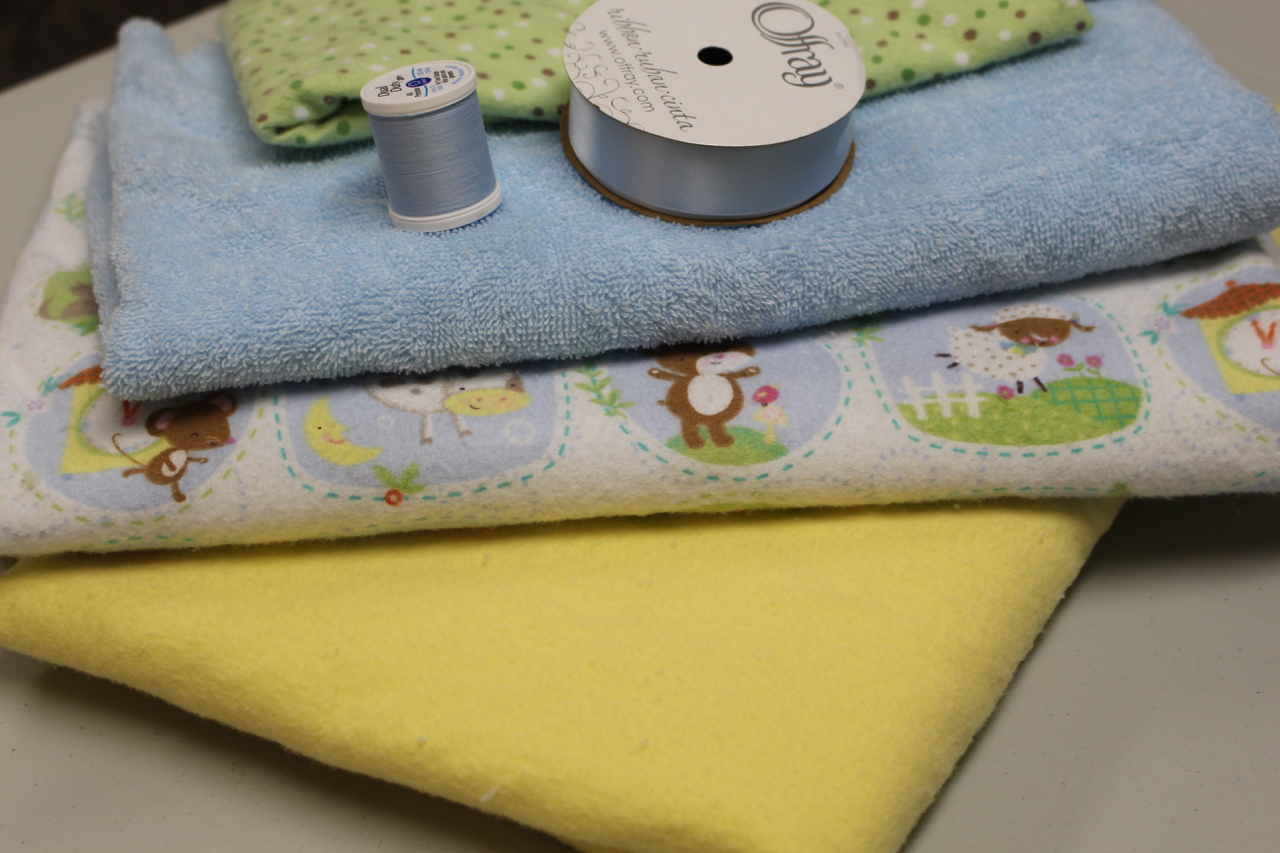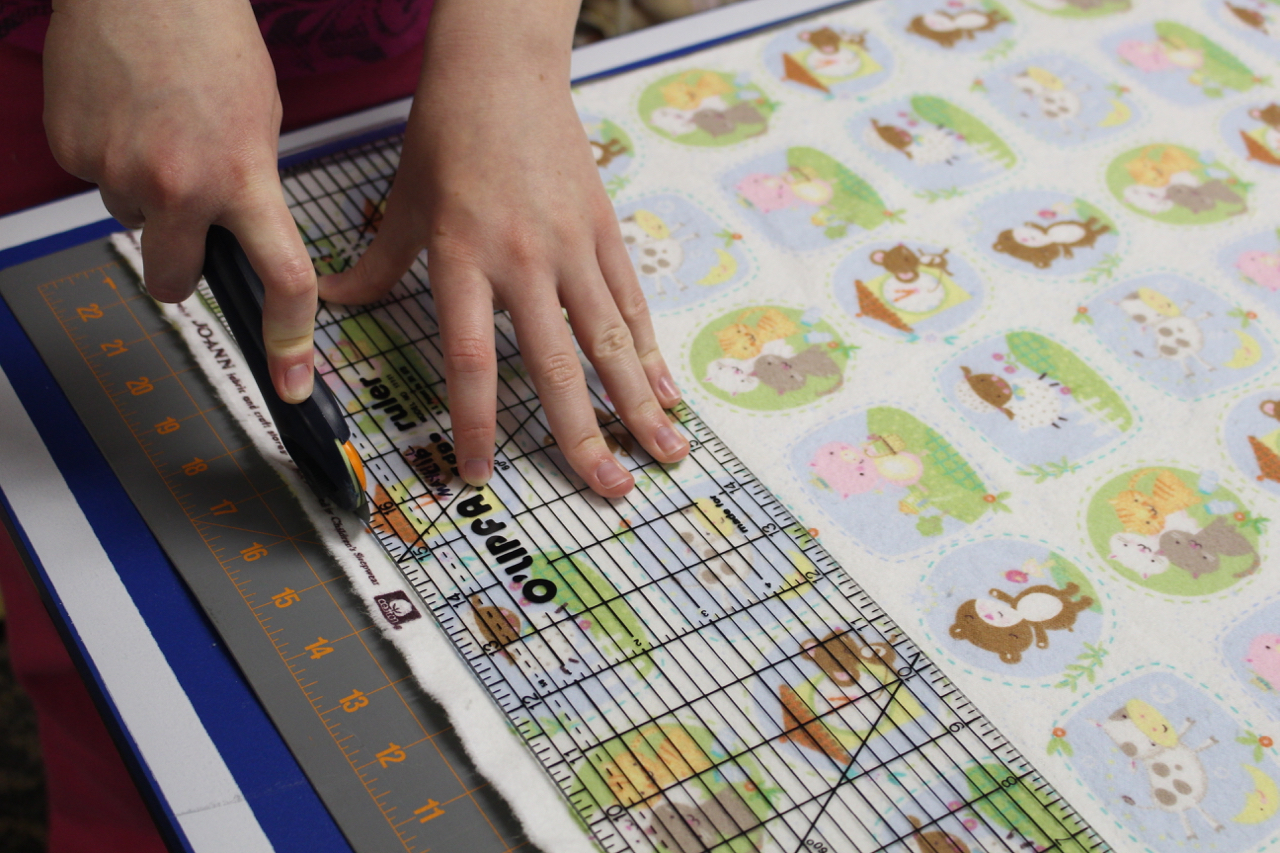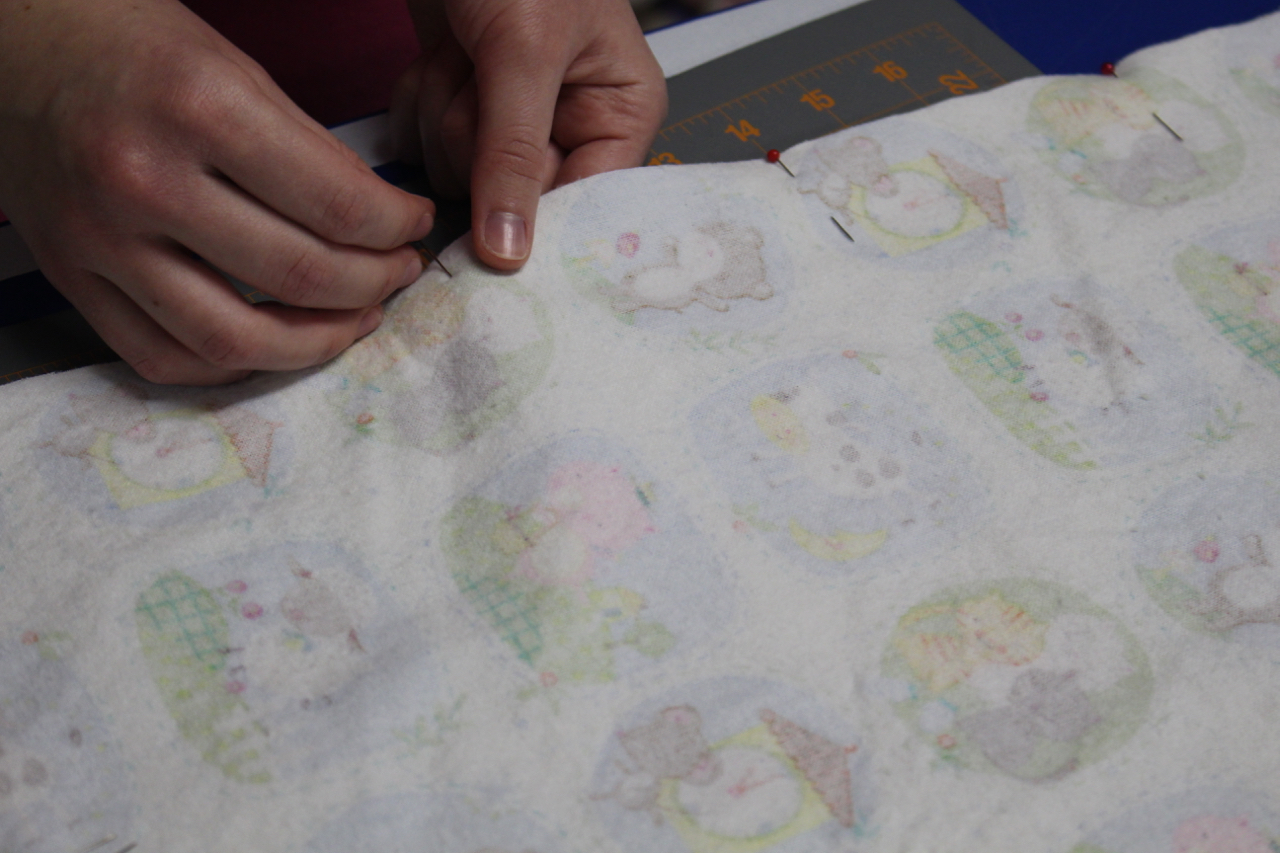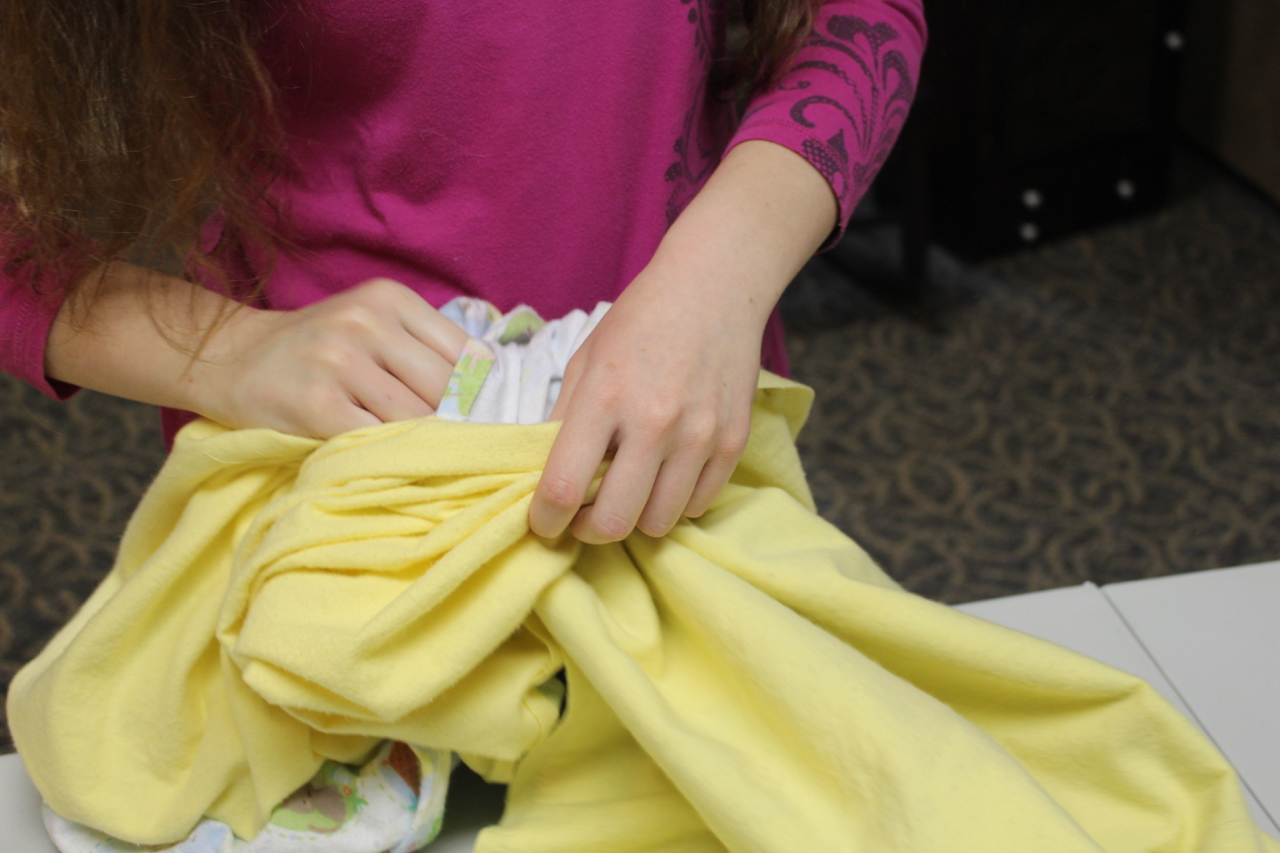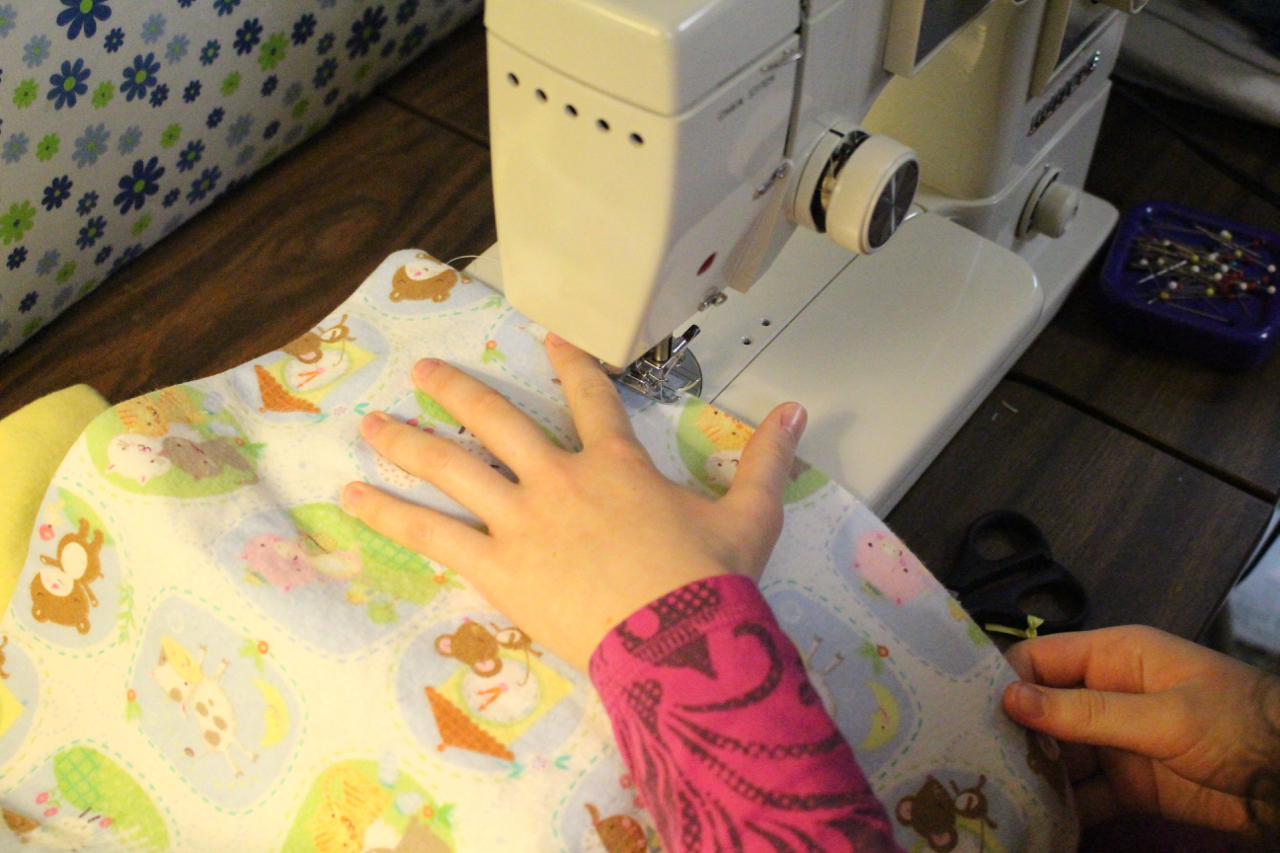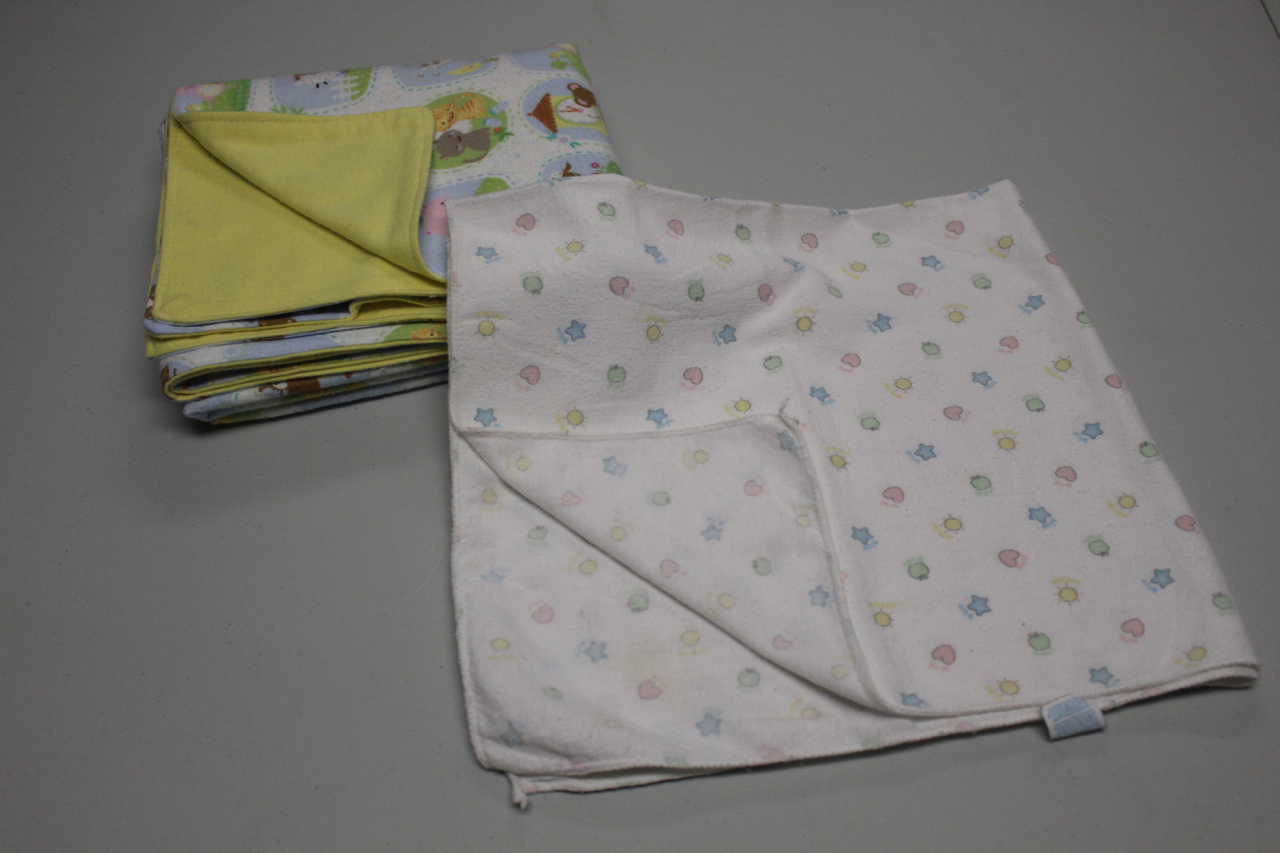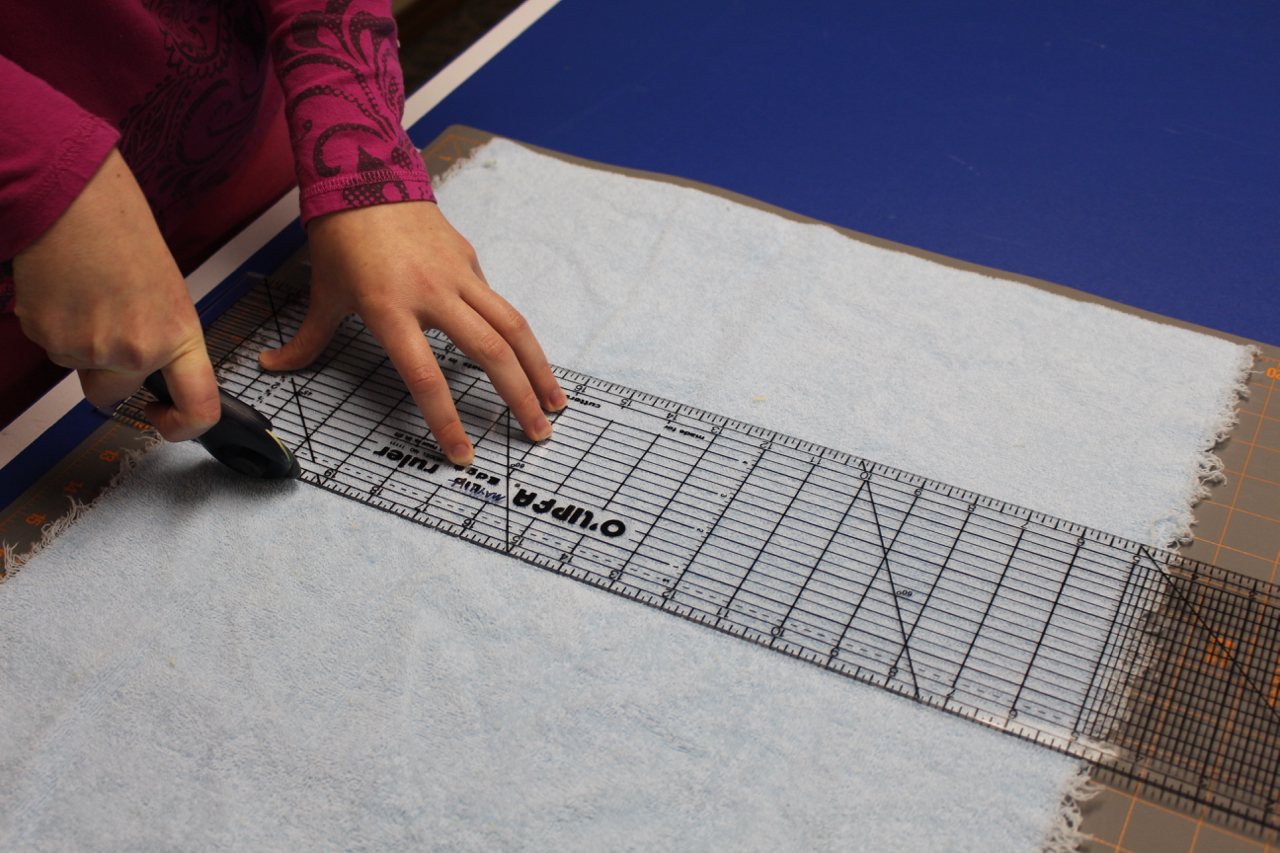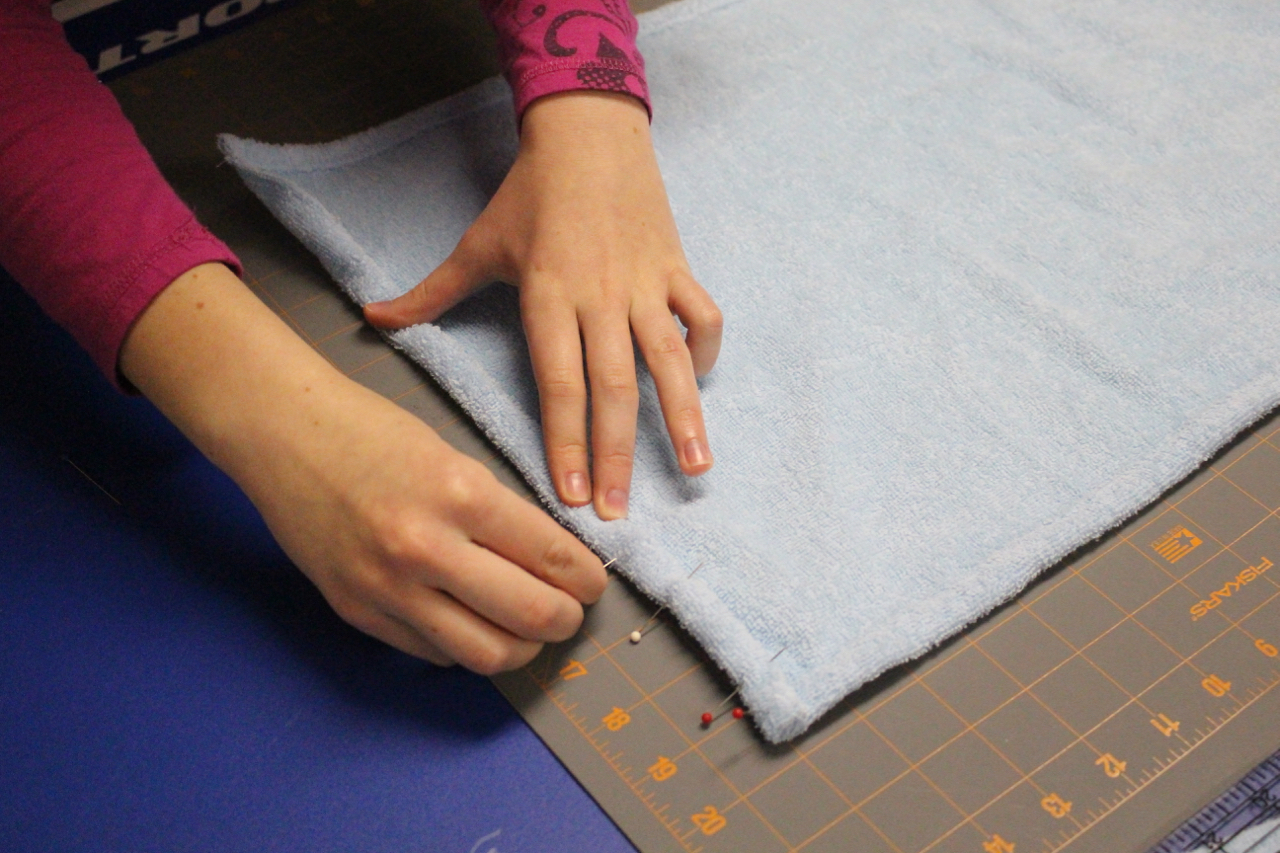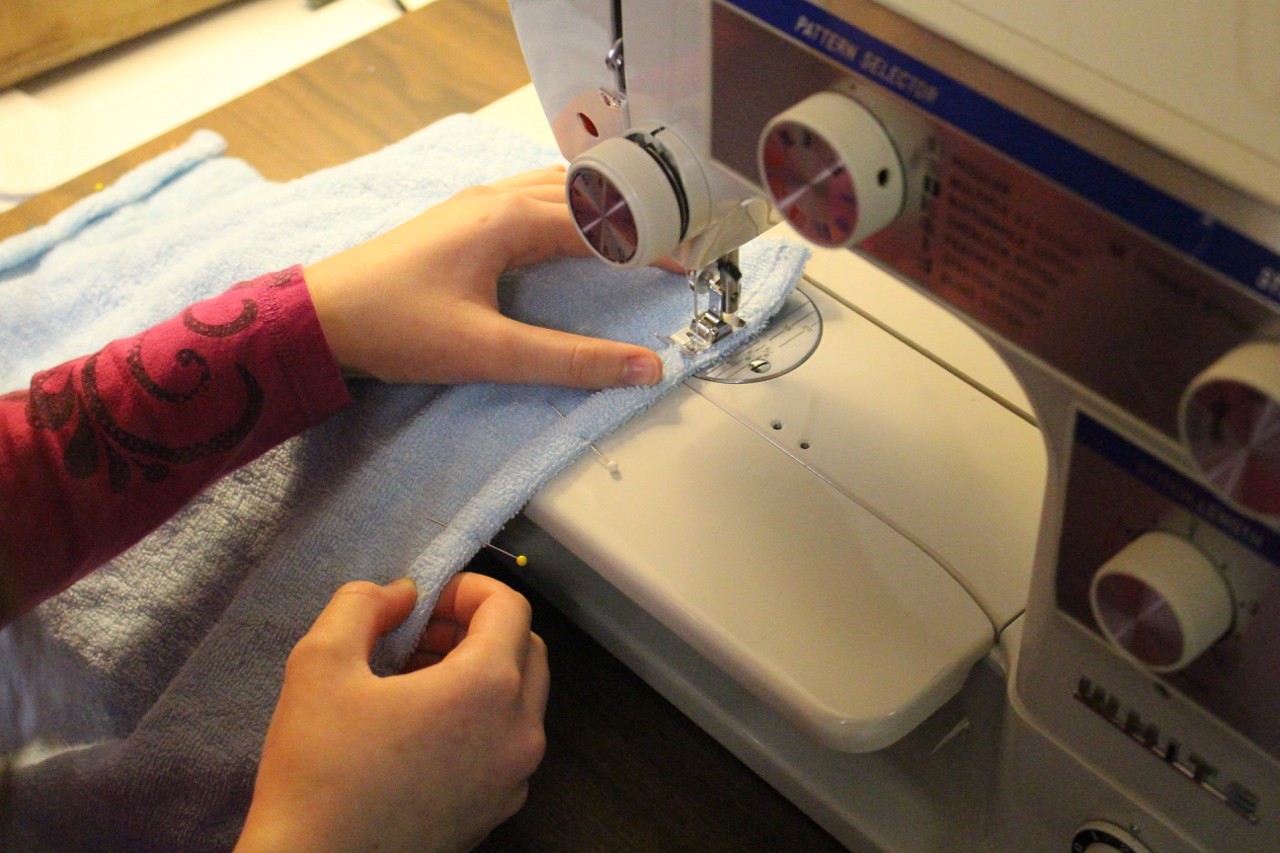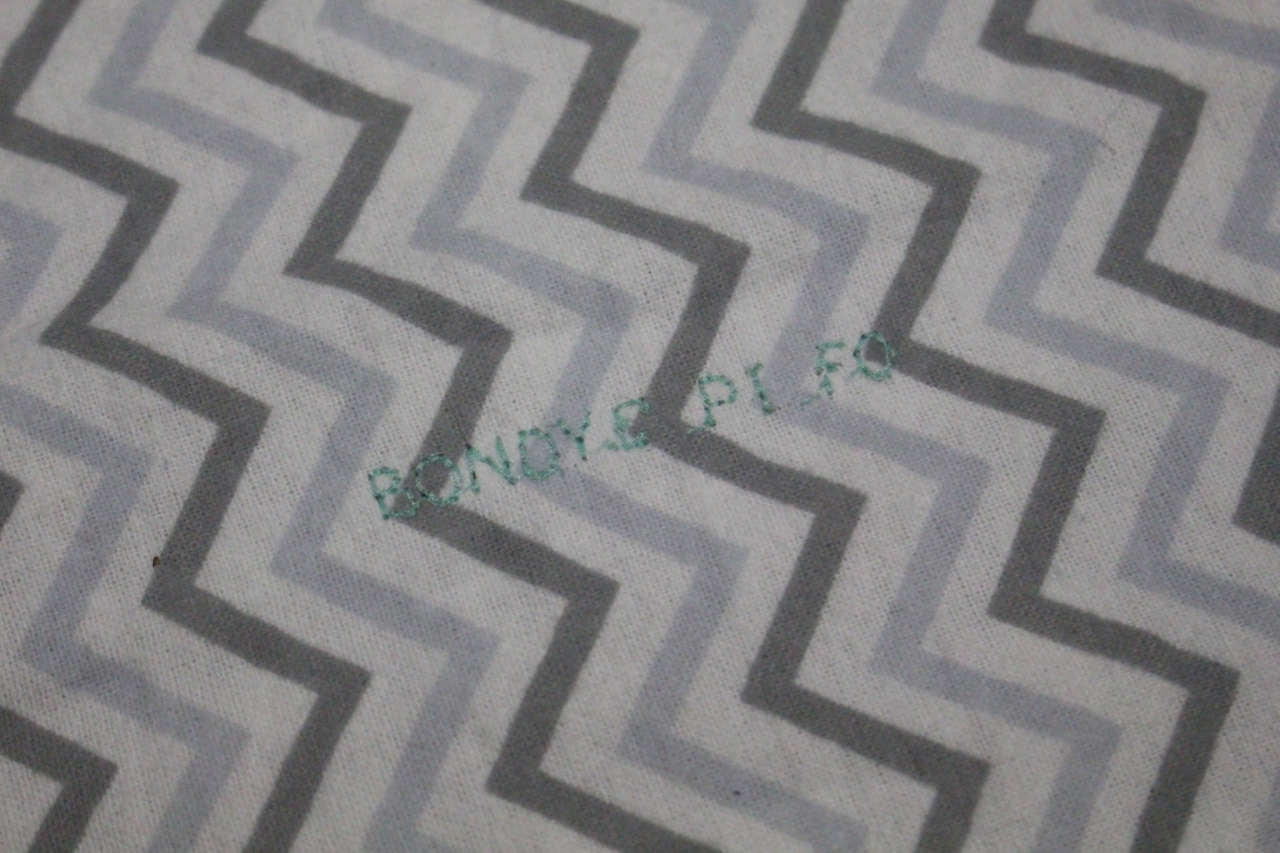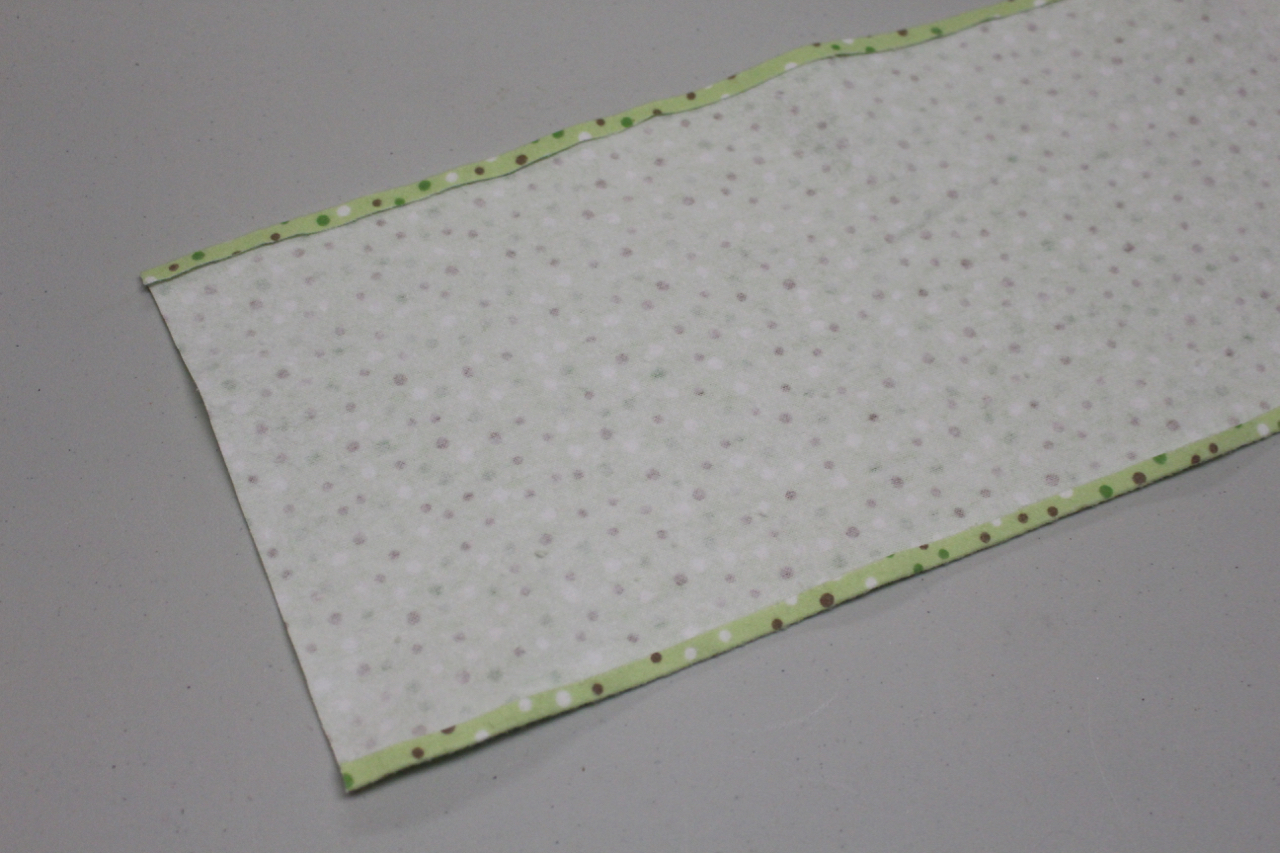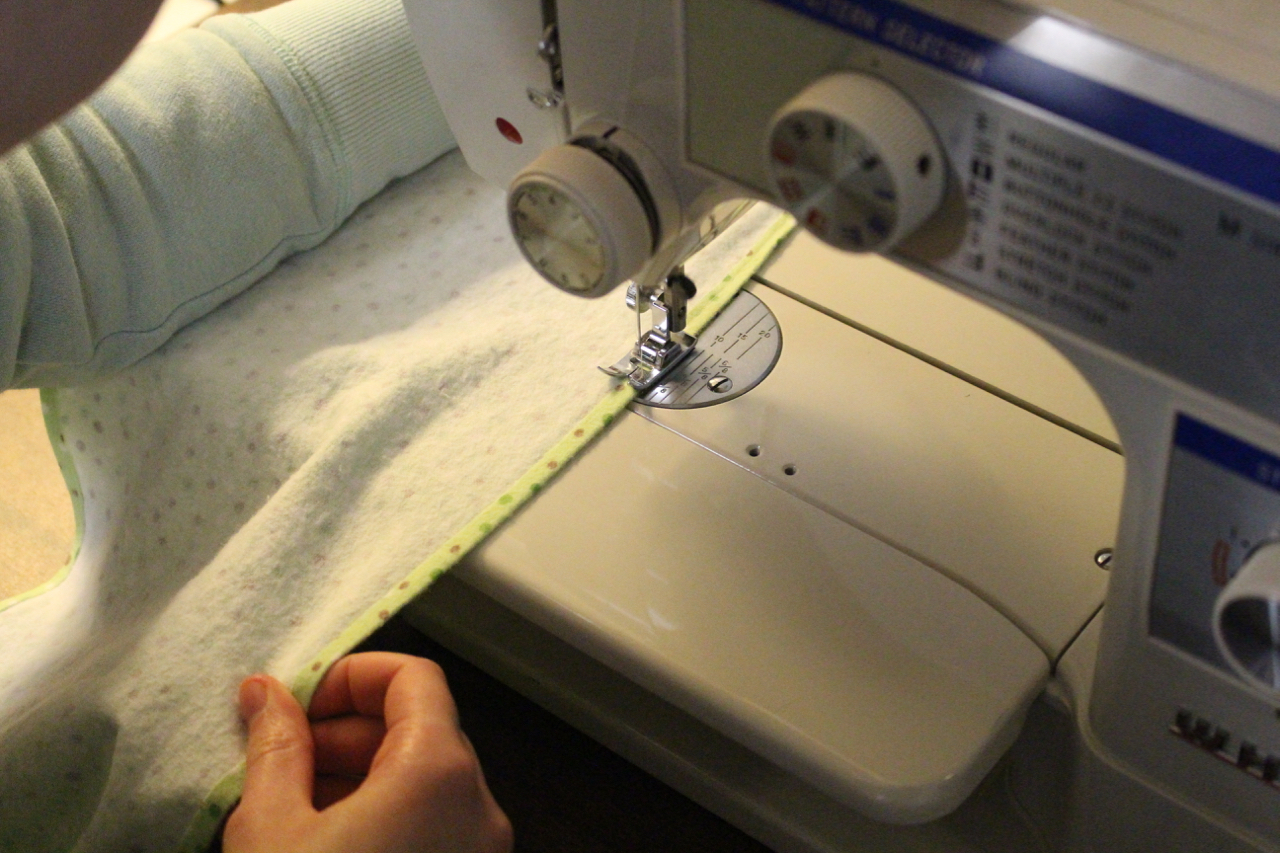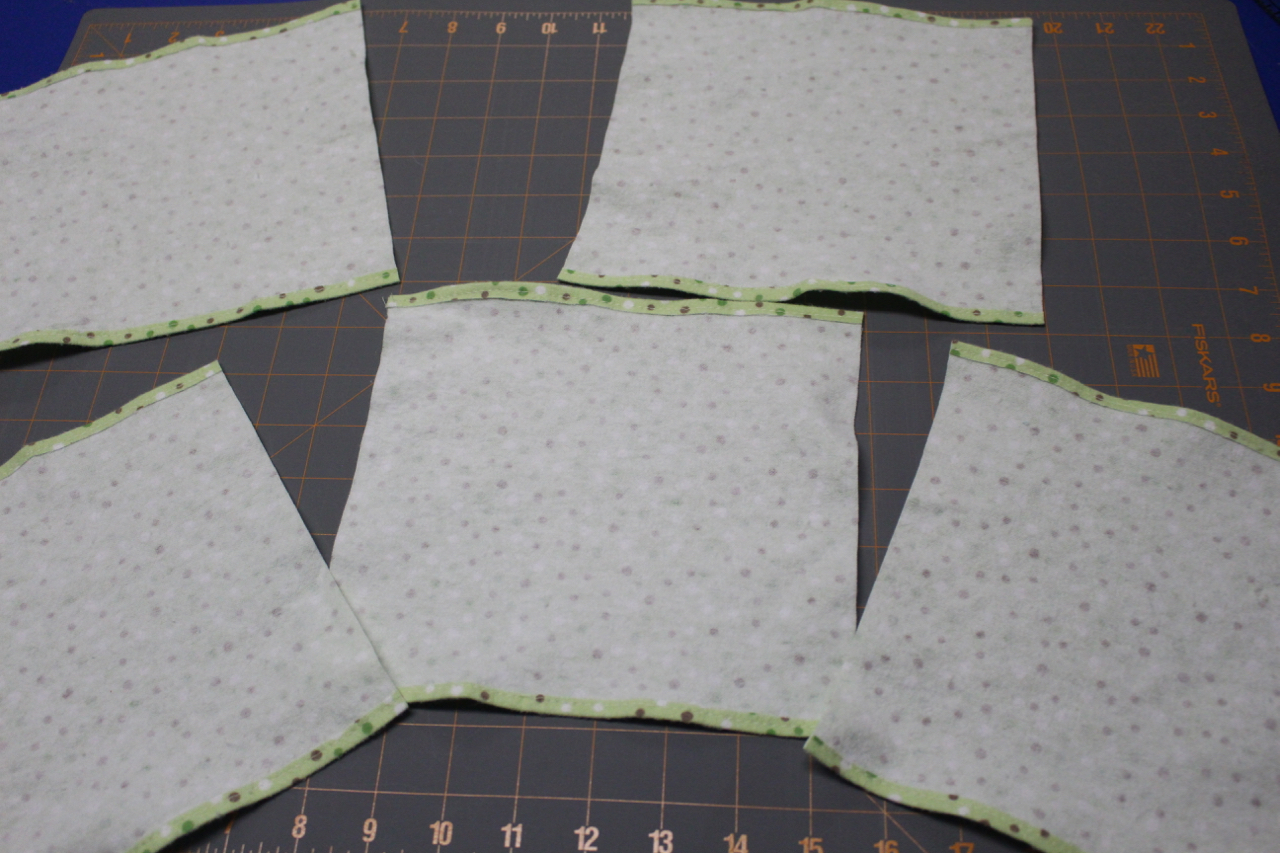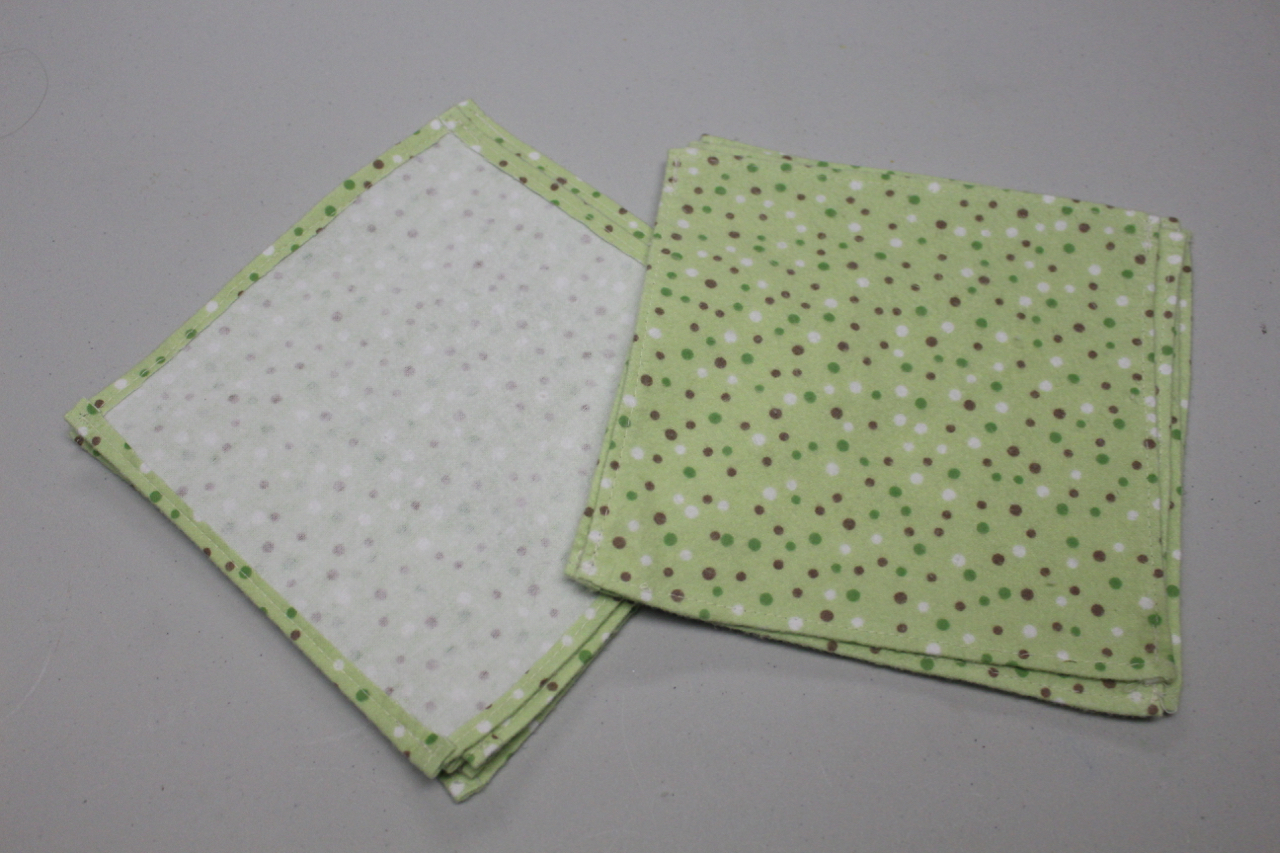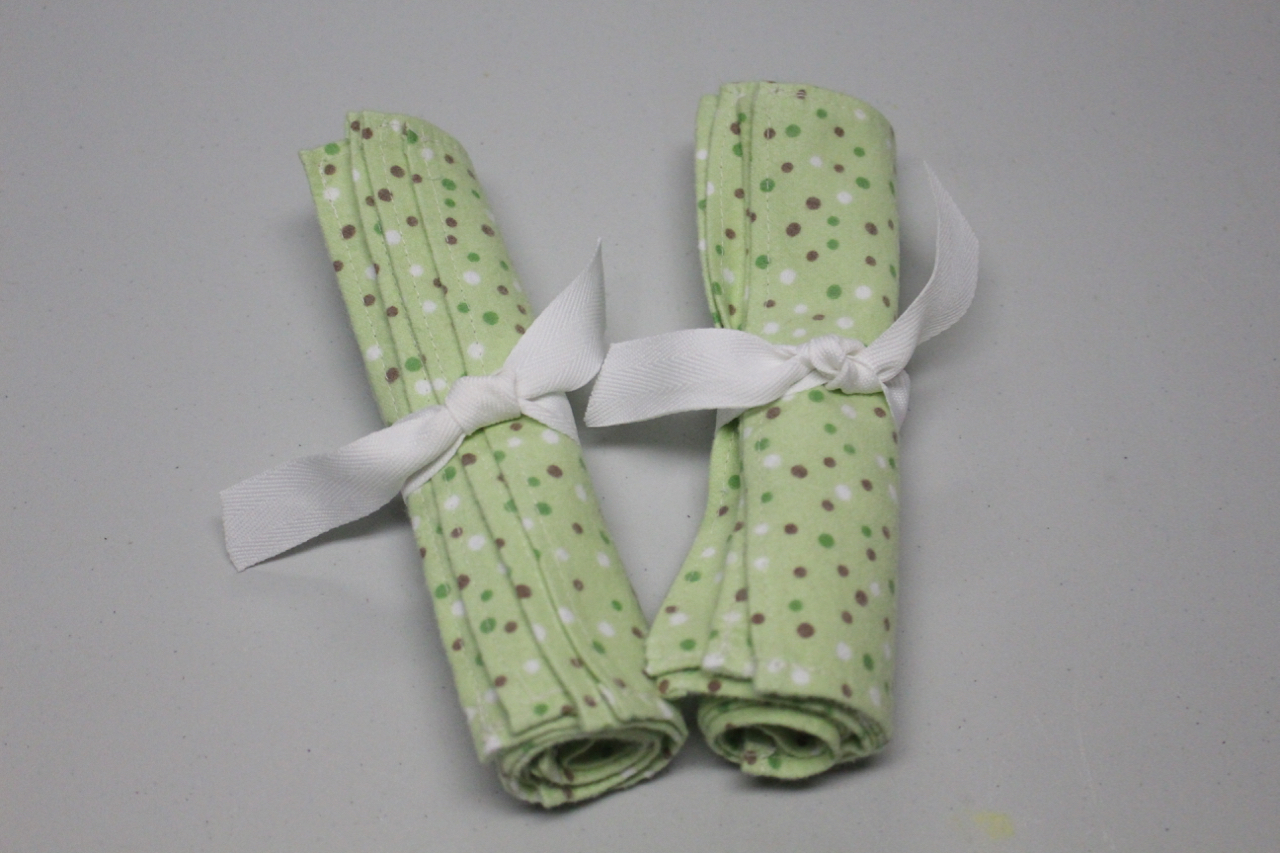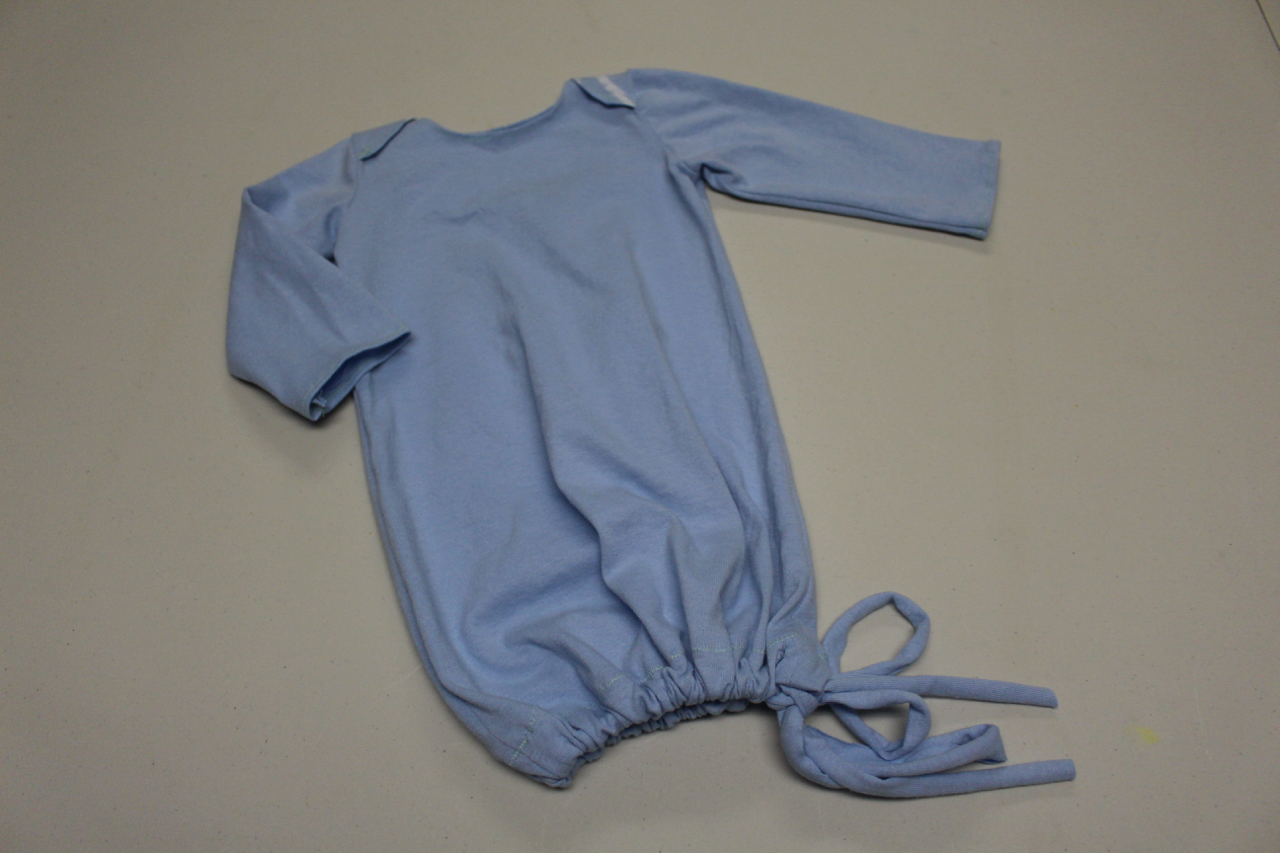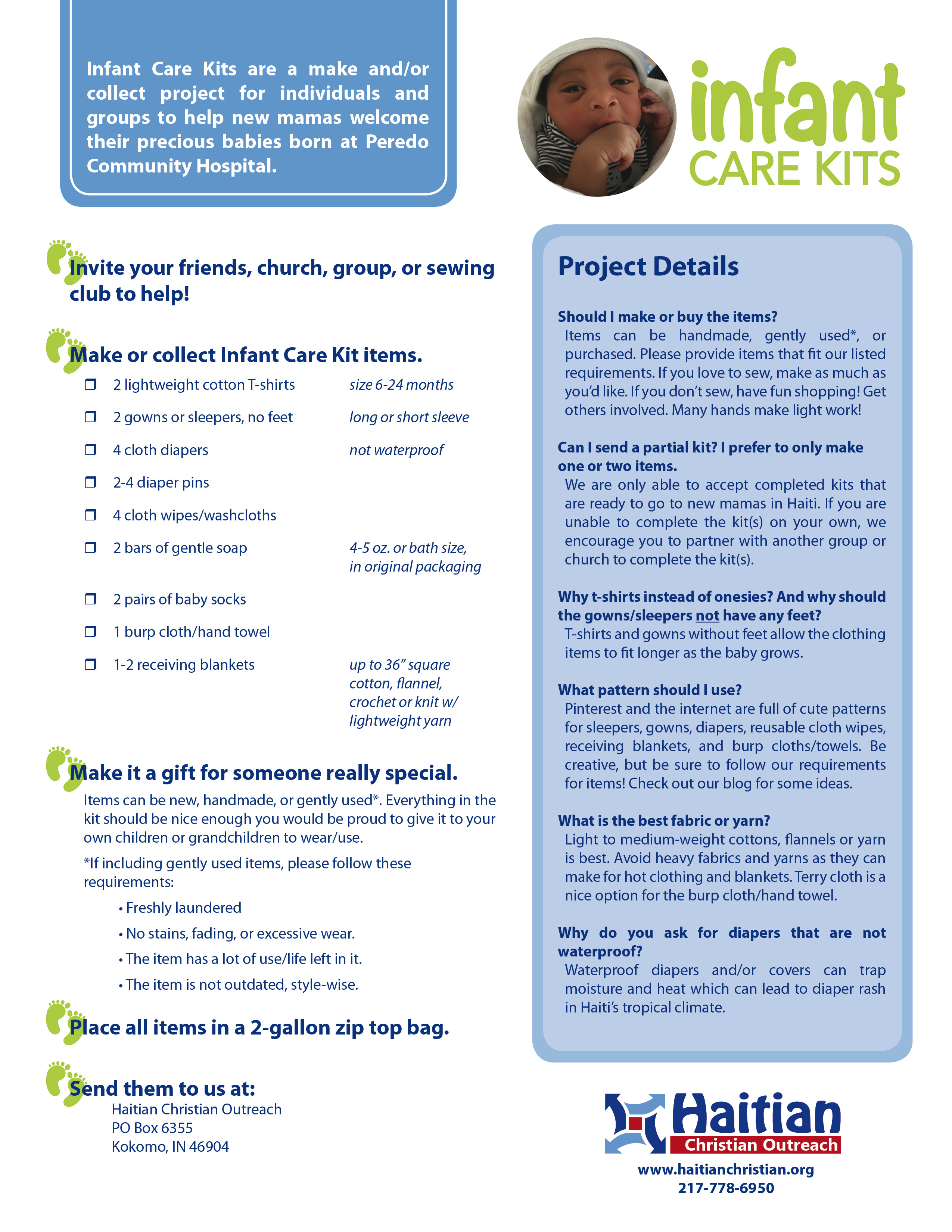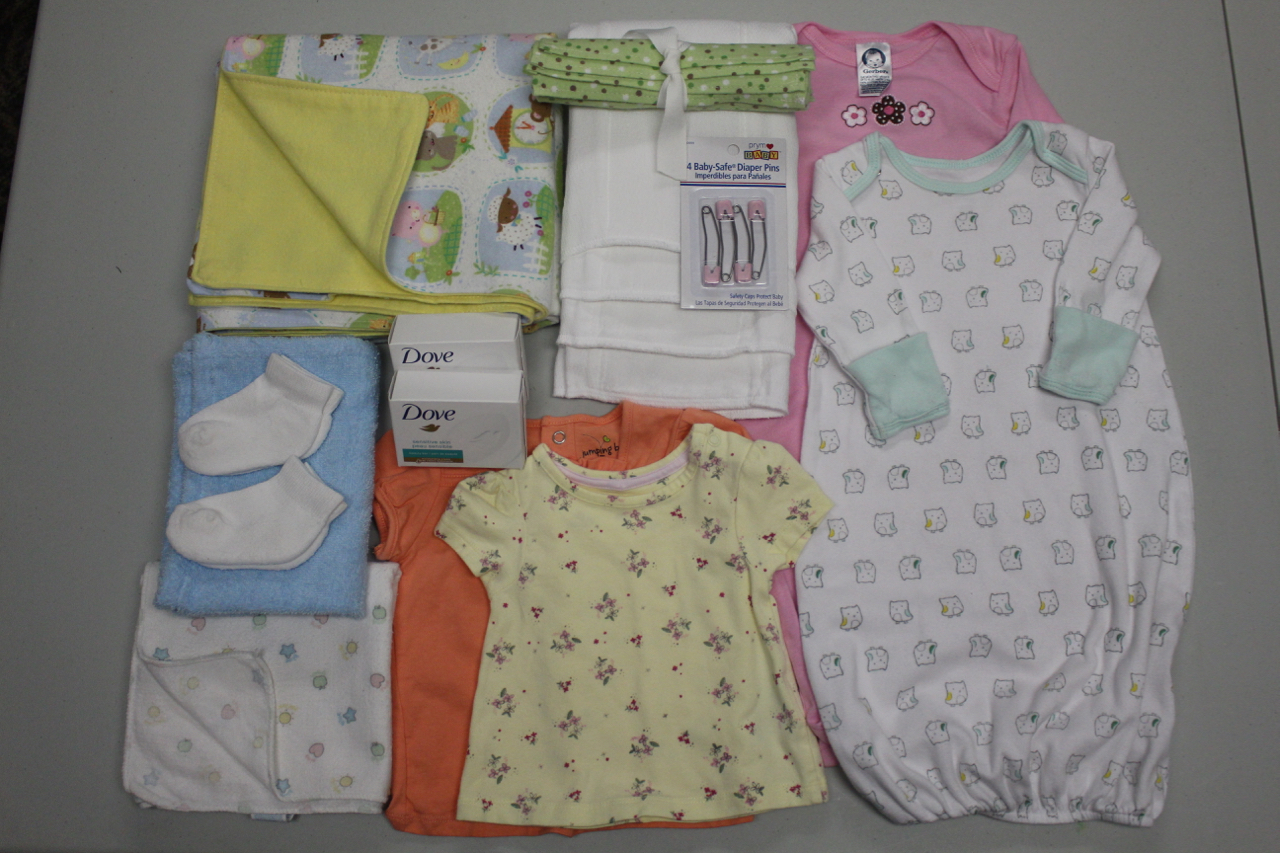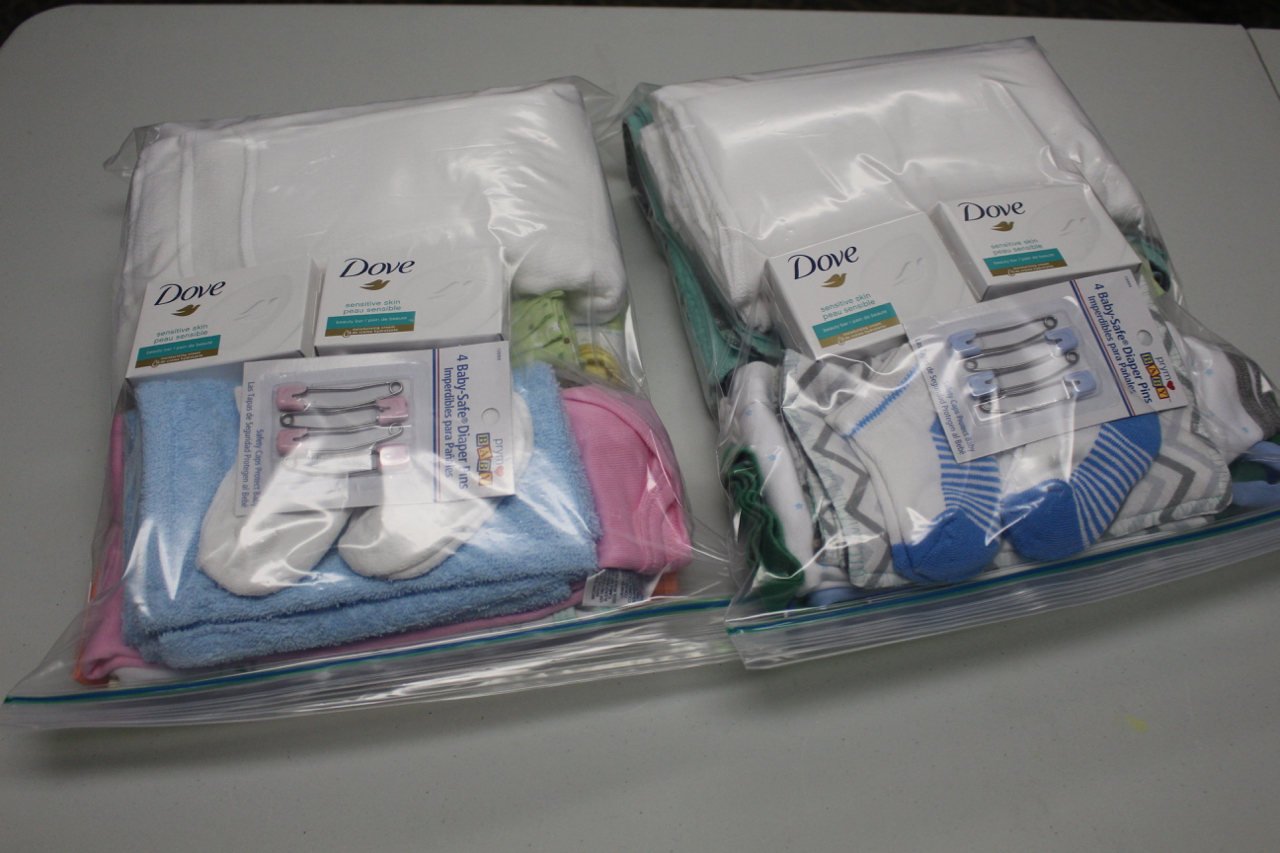Sewing Infant Care Kit Items
Arin, Jennifer, and Anna sewed and shopped for the items in our sample Infant Care Kits. Here, they share their tips for sewing some of those items.
Infant Care Kits are a make and/or collect project for individuals and groups to help new mamas welcome their precious babies born at Peredo Community Hospital.
Have fun putting your kit(s) together! Make it a gift for someone really special. Everything in the kit should be nice enough you would be proud to give it to your own children or grandchildren to wear/use. We want to bless these mamas with a really nice Infant Care Kit as they take home their new little one!
Receiving Blankets
Many different kinds of receiving blankets can be made and/or purchased. We do need all items to fit inside a 2-gallon zip top bag. Because some of the larger handmade blankets can be bulky, if you want to include two handmade blankets, you will need to take that into consideration.
- Blankets can be up to 36″ long which makes it easy to sew a blanket out of one yard of fabric.
- Blankets can be one-ply or two-ply.
- Some store bought receiving blankets fold much more compactly, such as Gerber flannel receiving blankets which are approximately 30″x30″.
- Light to medium-weight cotton or flannel is the best material for sewn blankets.
- Blankets can be crocheted or knitted using lightweight yarn.
- Use a serger or hem to make a one-ply or two-ply blanket.
- A topstitch on two-ply blankets gives a nice finishing touch.
This is a two-ply, hemmed flannel blanket with a one-ply, serged flannel blanket.
This is a two-ply, 36″ flannel blanket sewn with a serged hem.
Burp Cloths/Hand Towels
Light to medium-weight cottons or flannels are great for burp cloths. Terry cloth is another nice option. Burp cloths can be many different sizes. Standard hand towels range from 16″x28″ to 18″x30″.
We cut the terry cloth for this burp cloth to 16″x22″ and sewed a 1/2″ hem.
We cut the flannel for this burp cloth to 8″x20″, folded the raw edges in, placed wrong side of fabric facing, and serge-stitched them together. Arin’s machine has a letter stitch, so she added our 2017 team theme: Bondye pi fo (God is greater) as a fun extra!
Cloth Wipes
Medium-weight flannels or light-weight terry cloth work well for the cloth wipes. Patterns or darker colors are suggested. You can make 10 cloths, 8″x8″, out of 1/2 yard fabric. A serger would make these fast and super-easy.
This blog has great instructions for doing a zig-zag hem: Cloth Wipes Blog.
We cut the raw edges off 1/2 yard of fabric and cut two 8″ strips. Anna sewed a simple fold-over hem down each strip. Then, we cut each strip into 8″ squares and finished the raw edges with another fold-over hem.
Cloth Diapers
We learned A LOT about cloth diapers through this project. There are MANY different kinds of cloth diapers – fabrics, closures, designs, handmade, store-bought, inserts, covers, etc. It can be a little overwhelming! Here’s where we landed.
We ask that the diapers are new.
Waterproof diapers and/or covers can trap moisture and heat which can lead to diaper rash in Haiti’s tropical climate. We are asking that diapers for these kits are not waterproof.
Understand that it is not unusual for Haitian women to use regular cloth diapers without a cover and fasten them with pins.
If you would like to make cloth diapers, this tutorial was recommended to us by a mama with little ones who has made and is using this style: Cloth Diaper Pattern & Instructions
T-shirt Gowns
If you are a talented seamstress and you have some nice, baby-friendly T-shirts you’d like to sew into baby gowns/sleepers, we have a sample to share. Arin made this blue sleeper from a T-shirt using these instructions. Lutheran World Relief also has some instructions for making baby gowns from T-shirts.
For a list of kit contents, where to send completed kits, and more, you can download a PDF of the general kit instructions here: Infant Care Kit Instructions.
Questions? Contact Jennifer.

